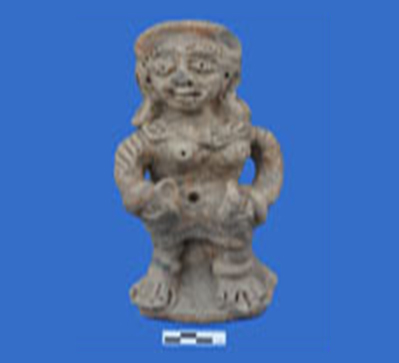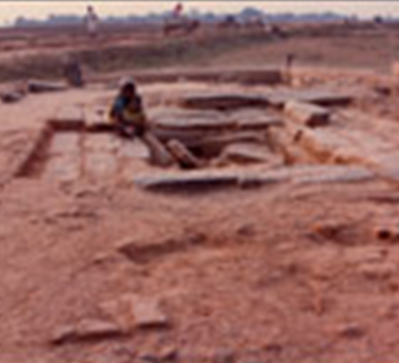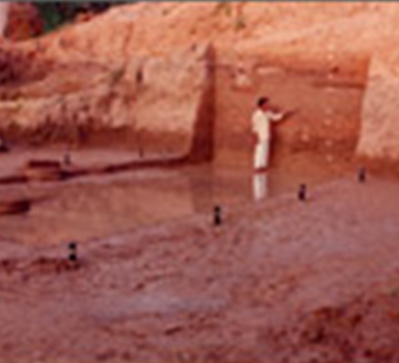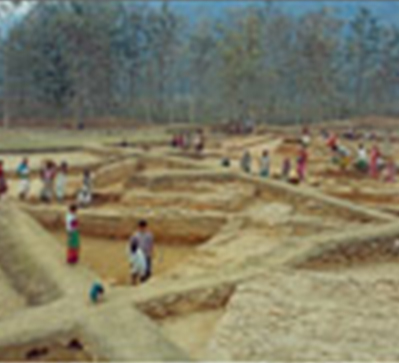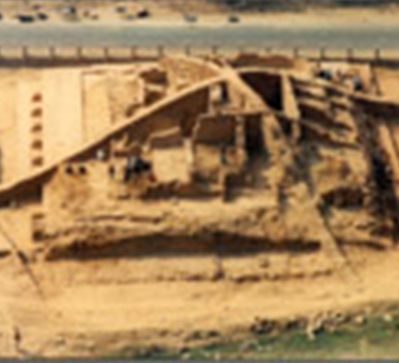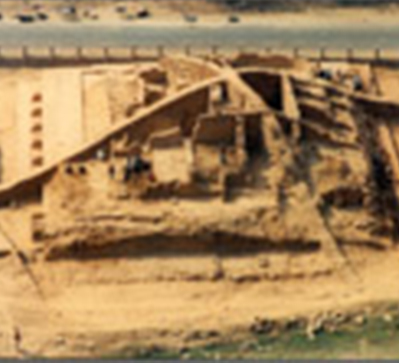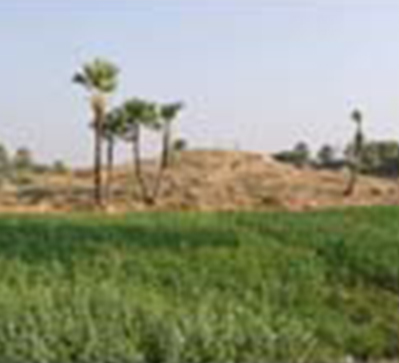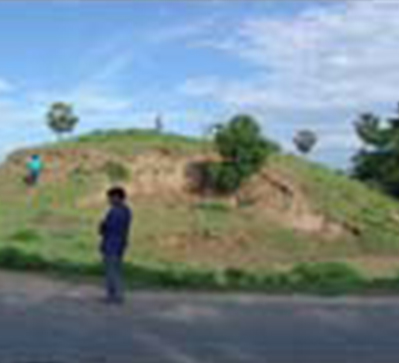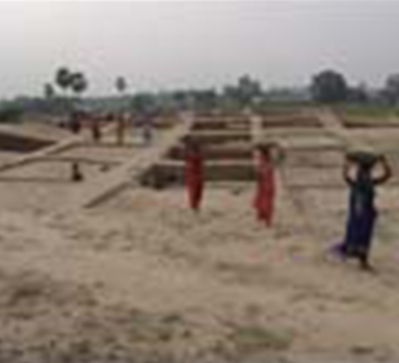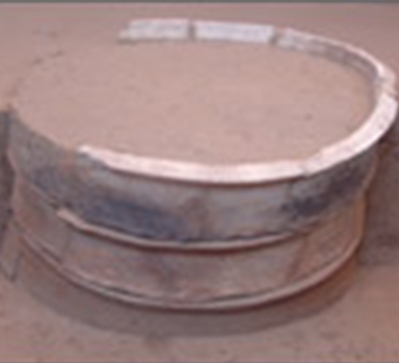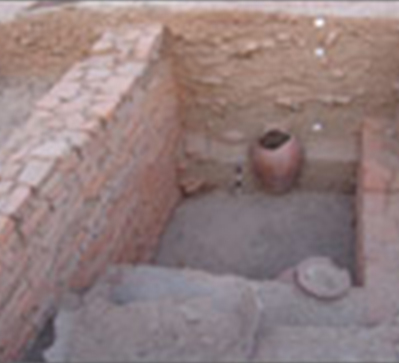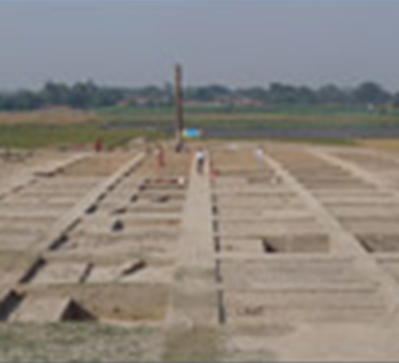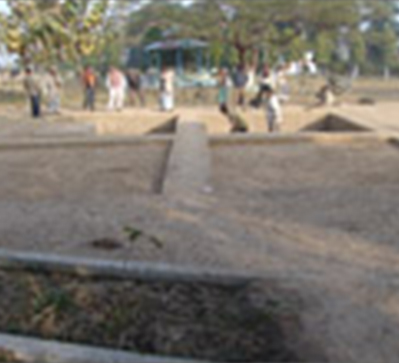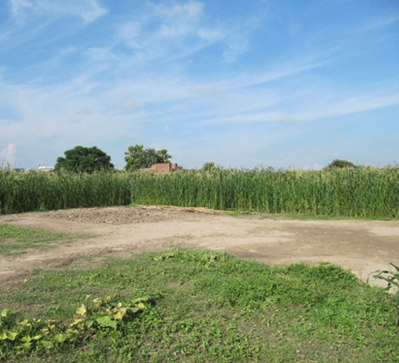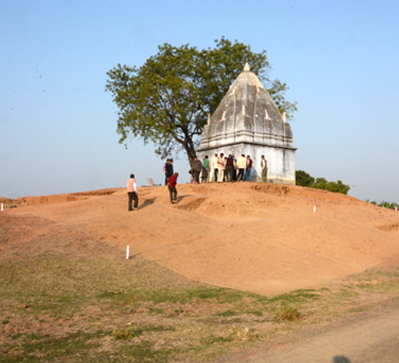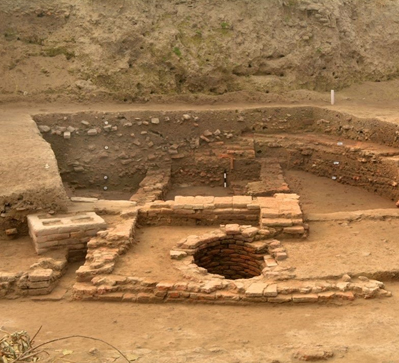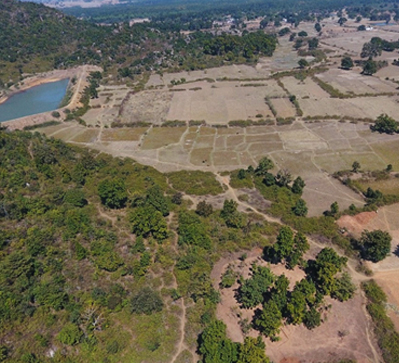Rukmini Sthan
| Location | 26º6 N; 85º25’E |
| District | Nalanda |
| State | Bihar |
| Excavation Years | 2014-15 |
The mound at Rukmini-Sthan is situated about 97 km south- east of Patna and 2km south-west of the ancient ruins of Nalanda Mahavihar. The mound roughly measures 200x175m. A modern temple has been constructed by the Villagers at the top of the mound to enshrine a colossal seated image of the Buddha in Bhumisparsa Mudra. The black basalt image of the Buddha belongs to the Pala period. The colossal image did not escape the attention of Cunningham who regarded it as one of the finest and largest pieces of sculpture ever seen by him.
The mound at Rukministhan was excavated to ascertain its relation with the nearby ruins of Nalanda Mahavihar and to know the culture sequence of the site.
The structural remains unearthed at the site include votive stupas, brick walls, steps to the north of the temple containing the colossal image of the Buddha and rammed floors, etc. Interestingly, a small monastic structure of three cells opening into a common corridor was exposed to the north-west of the Buddha image. The identifiable sculptural fragments include four-armed Visnu. Male figure in dhyana mudra, made head with a snake canopy, Ganesa, etc. Most of the sculptures are made from poor quality of sedimentary sandstone or slate stone and carving shows affinity with the Gupta idioms. Recovered antiquities includes terracotta sealings, terracotta beads, sling balls, stoppers, hop scotches. Gamesman, animal and human figurine, 2 stamps and solitary specimens of dice, amulet, mould, dabber, plaque, bird figure, kirtimukha, ear-lobe and spool.
The ceramic industry is predominantly RW. The main pottery types include storage jars, bowls, lamps, basins, deep dish-cum-basins, pans, vases, handis, small pots, miniature pots, kulhad, lids, ladles, lid-cum-bowls, sprinklers, spouted vessels etc.
The excavation revealed structural remains that could be assigned to two cultural epochs- Gupta-post-Gupta (5th-8th century AD) and the succeeding Pala period (8th-12th century AD).




